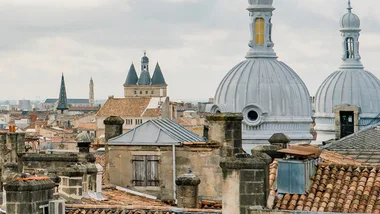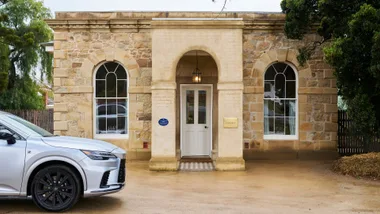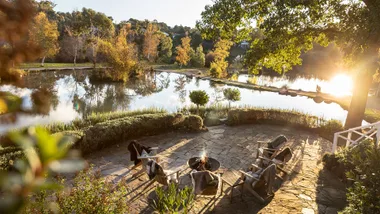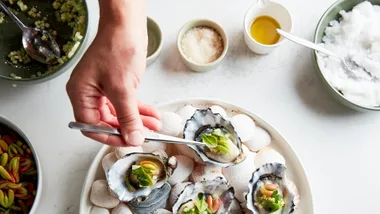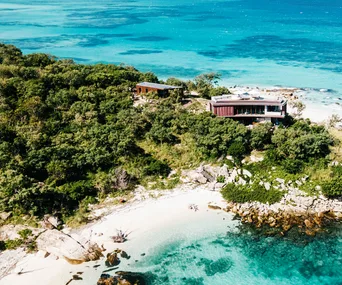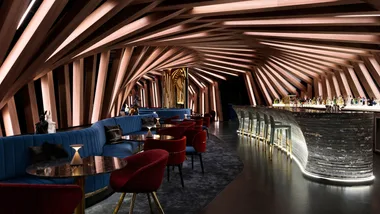MORE INFO
[Christine Manfield’s sweet-and-sour tomatoes recipe
](/christine-manfield-sweet-and-sour-tomatoes.htm)
Christine Manfield’s crisp okra and pomegranate salad recipe
Tasting India by Christine Manfield, with photography by Anson Smart, will be published in October by Penguin Lantern ($89.95, hbk). Manfield hosts a 16-day “Tasting India” tour from Delhi to Hyderabad for Epicurious Travel starting 30 October.
With India, it’s difficult to know where to start, mind how best to capture its essence. But this book is one story of India, my story of India, gathered across many visits. My insights are informed by the connections I’ve been fortunate enough to make with many different people. The recipes I’ve collected along the way reflect the stories of countless mothers, grandmothers, daughters, sons of daughters, brothers, sisters and aunts, as told to me during my travels. Listening to those stories has been a most nourishing experience, like being enveloped in the generosity of a sari, itself a potent symbol of India.
On each and every visit, I surrender myself to the procession of life before me, as India begins to pulsate through my veins. It is impossible to be indifferent to this place, the world’s largest democracy – though it is essential to bring an open mind and a good degree of patience. There is no choice but to jump right in, be brave and grab every exhilarating moment. This is a country where everything happens and anything is possible. Each day is a new adventure, providing another intriguing piece of the puzzle. As soon as I think I have a pretty good handle on it all, something pops up to confound my thinking and make me look at everything anew. But to me, that is just part of the whole Indian experience, the way the place and its people subtly continue to charm, inspire and compel, always daring to challenge. It makes me feel alive.
India is a visual feast and a gastronomic paradise, seducing with its food and contagious hospitality. Modern India has 29 states, each with distinctive food that reflects its regional and cultural heritage. Food preparation is bound up with spirituality, and demands a thorough understanding to appreciate its nuances. Religion underpins the dietary laws of each sect. To the uninitiated, it’s a minefield to navigate and accommodate, but to India’s Hindus, Jains, Muslims, Sikhs, Syrian Christians, Catholics, Parsis and Jews, it’s second nature, with each respecting the traditions of the others. The country’s culinary tapestry is complex, varied and ancient, underpinned by a masterful and enviable use of spice.
One of the many reasons I respect and admire Indian food so much is that the history, culture and religion and traditions of each region are expressed perfectly in its food, and in the rituals and traditions that surround it. India boasts as many cuisines as it does communities. Food varies from region to region, from village to village, and from cook to cook. For me, part of the excitement of contemporary Indian cuisine lies in the way each cook or chef carries the recipes and heritage of their homeland with them, wherever they happen to find themselves.
Despite having eaten my way around India for more than two decades, every visit holds further discoveries and taste sensations. The Indian table is an extraordinary feast for the senses – spices are to the tastebuds what colour is to the eyes, and the symphony is magical and powerful.
I may have covered a lot of ground during my Indian travels, experienced myriad tastes, read the works of many Indian authors, and absorbed so much, yet the story is incomplete. Most of all, though, it is my ambition to expand on the unending culinary journey that I have begun, to delve further into the gastronomic secrets gleaned from India’s people, to attempt to capture more of India’s mesmerising energy and mystery, to spend time unfettered by the demands of everyday life, to remain enticed and connected. Each time I taste those flavours, I am transported back, reminded of endless experiences and delightful memories.
**Rajasthan: Deserts, palaces and warriors
** Travelling through the desert state of Rajasthan you discover a region overflowing with an embarrassment of riches. It is perhaps the most dazzling state of all, the “land of the kings”, ablaze with colour everywhere you look – from saris and turbans to forts and palaces to spices and food. Descendants of the seductive kingdom of the mighty Rajput warriors, the Rajasthanis are striking and proud. The men wear their distinctive moustaches and turbans with great pride, while the women are swathed in vividly coloured saris and adorned with dazzling jewellery.
The landscape is dotted with Mewari forts dating from the 14th century onwards, many of them now converted into luxury accommodation set against the dramatic backdrop of the Aravali mountains, where the Mughals once hunted with maharajas when tigers roamed freely. More recently, luxury trains have offered a new and popular travel experience in Rajasthan. The Royal Rajasthan on Wheels and the Maharajas’ Express – both with suites and dining cars – have re-created the grand style of the palaces and the romantic glamour of decadent train travel. Plying between Delhi, Agra, Jaipur and Udaipur, the trains travel at night while guests are sleeping and stop during the day for some on-foot exploration and sightseeing at each stop of the journey.
Remember, though, that this is the desert, and summer can be relentless. To avoid the overbearing temperatures and the heat haze, aim to visit between October and March.
Rajasthani food is also prey to the whims of the desert and the paucity of ingredients it yields. Because water is scarce, milk, buttermilk and curd are liberally used to add moisture. Dried lentils, indigenous desert beans, millet, corn and other cereals replace leafy greens, and the dominant spices include mustard seeds, turmeric, fenugreek and coriander.
**Jaipur and Jodhpur
** Known as the gateway to Rajasthan, Jaipur is the largest of the state’s fortified cities, the pink hue of the local stone used in its construction reflecting the colour of the desert. Just north of the city is the magnificent Amber Fort, whose lakeside garden in the summer pavilion is planted like a Persian carpet.
One of the best times to visit Jaipur is on the eve of the Holi festival (which falls between late February and March), to watch the procession of colourfully decorated elephants trumpet through the streets. The festival culminates in the grand spectacle of an elephant polo match. Another lovely time to visit is late January, when the desert air is still cool and the city plays host to an annual literary festival. It’s a chance to get up close to some of India’s best writers and immerse yourself in the city’s culture. A visit to the shops and markets of the Johri Bazaar is mandatory.
Vegetable vendors – on the sides of the streets, in vendor carts and in small shops – display their fresh, colourful and diverse produce invitingly. The shops have narrow frontages and the owners sit out the front on well-worn charpoys inviting every passer-by in to browse. Wherever you look, business is brisk, and I find it nigh on impossible to leave empty-handed.
For an authentic taste of Jaipur and Rajasthani food, venture into one of the busy dhabas (roadside restaurants) set up under makeshift canopies or overhanging trees, where the locals eat. They rely on fast turnover and, more often than not, are where the best food can be found. Dishes are served from large conical pots called handis and breads are cooked to order at a furious pace.
At the other end of the culinary spectrum, the late Maharani of Jaipur, Rajmata Gayatri Devi, was a champion of the city’s royal cuisine, publishing a collection of heirloom recipes from the palace kitchens. Suvarna Mahal, the restaurant at the Rambagh Palace Hotel, carries on the traditions of the Khansamas, the royal cooks of Rajasthan, and offers a culinary tour of the kingdom with its menu. Likewise, the museums of Jaipur’s City Palace showcase the opulence of royal life, and are definitely worth a look to appreciate the richness of the culture.
The second-largest city in Rajasthan, Jodhpur sits at the edge of the Thar desert, which stretches west to Jaisalmer and beyond. Its indigo-blue buildings are at their most beguiling at sunset. The cityscape is dominated by the majestic presence of the Mehrangarh Fort – a powerful reminder that the skills needed to build on such a grand scale go back hundreds of years. The other impressive building that defines Jodhpur is the majestic Umaid Bhawan Palace, a few kilometres from the centre of town. One of its wings remains the private residence of the Maharaja of Jodhpur, and the rest has been converted into a luxury hotel, providing a finely tuned sense of space, proportion and opulence.
Jodhpur is also the closest city to a couple of rural heritage properties that capture the essence of Rajasthan, Chhatra Sagar and Rohet Garh – both within an hour or two’s drive.
**A taste of desert life: tented wilderness camps
** On the road between Jaipur and Jodhpur, near the village of Nimaj, the luxury tented camp at Chhatra Sagar takes three weeks to build each year for the season. The tents are set up along the top of a dam wall overlooking a vast reservoir that collects the winter rains: full of water at the start of the season in October (if the rains have been sufficient) and empty by March, the reservoir is the water supply for the property and the surrounding villages and farms. The camp is a blissful hideaway, with uninterrupted vistas over a bird sanctuary and grazing lands for goats, cows and water buffalo.
Chhatra Sagar is the homestead of the genial Singh brothers, Harsh and Nandi, and their cousin Raj. However, it is their wives, Shrinidhi and Vasundhara, who hold sway in the kitchen. Excellent cooks, the women are passionate about regional food, which they prepare in the time-honoured way, yet with a modern sensibility. Both are gracious and generous with their time and knowledge, sharing family culinary secrets with me and cooking sensational food each and every day, never serving the same dish twice. Organic produce is sourced from neighbouring farms, vegetables and pulses feature heavily, textures are fresh and crisp, and flavours are light – exactly the kind of food you crave after hours of road travel.
One afternoon we watch a thunderstorm roll across the plains as we sip tea on the covered terrace in front of our tent. In a place that is normally so dry and dusty, it is a real treat to see and smell the rain. Afterwards, the air is sweetly scented with flowering trees and shrubs, peacocks strut their stuff, and pelicans and geese glide across the newly replenished lake.
About an hour’s drive south of Jodhpur, in a small village on the edge of the desert, lies Rohet Garh, a charming heritage hotel, with the enticing options of horse-riding and jeep safaris, or a few days at their tented wilderness camp further into the desert. Each morning we travel through the spartan terrain, spotting herds of blackbuck antelopes and getting a glimpse of life in the Thar desert. We stop at different villages and come to appreciate the simplicity of the way of life of the Bishnoi people, who prioritise conservation and live in complete harmony with nature, farming millet, sesame and leafy greens. Their houses, made of dried dung and mud with straw roofs, are pristine and beautifully kept. The shepherds lead a nomadic existence, accompanying their herds of sheep and goats in search of water and feed. We pass many different groups during our travels, and each time we are struck by their dignity and grace.
My other reason for visiting Rohet Garh is to spend an afternoon cooking with Rashmi Singh, founder of the hotel and an accomplished cook who is faithfully preserving traditional recipes. She uses recipes inherited from her late mother-in-law, Thakurani Sahiba, who wrote down her recipes in two small cookbooks, Rohet Garh Cuisine and Quick and Easy Rajasthani, which are now treasured family heirlooms. Since my last visit, a purpose-built demonstration kitchen has been added; it opens out to a roof terrace, where dinner is served during the cooler months. Sundowners are served in the expansive manicured garden, a delightful and essential daily ritual when we have washed off the day’s dust and adventure. For dinner we feast on a thali of sweet-and-sour tomatoes, eggplant cooked with yoghurt, a potato curry, spicy chicken and chutney. Rashmi’s cooks (there are eight of them) prepare churma, wholewheat bread dough that is sun-dried and used in myriad dishes in desert food. After the dough is cooked, it is crumbled and cooked again with sugar, ghee and almonds, then pressed into cakes and dressed with edible silver leaf. It’s rich and dense – one small piece is more than enough.
West of Rohet Garh, across the stony Thar Desert, lies the small city of Jaisalmer. Its sandstone buildings appear to rise directly from the desert, glowing red in bright sunlight and shimmering golden in the soft morning and evening light, a timeless scene. At the heart of the city is a 12th-century fort that some 500 families call home, making it one of only a handful where people still live. Contained within its ramparts are palaces, courtyard mansions and a temple – a world unto itself.
**Udaipur
** At the southern end of Rajasthan, Udaipur is a city of palaces, lakes, cenotaphs and gardens, all bathed in an ivory glow from the pale sandstone and white marble of its buildings. The surrounding country is lush and green with small lakes dotted around, while imposing hills and mountains provide a dramatic backdrop. The crowning glory of Udaipur is the Lake Palace Hotel, which appears to float in the centre of Lake Pichola, its white marble glistening in sunlight and moonlight. Being ferried across the water in a small flat-bottomed boat is quite magical, and on a sunset gondola ride around the lake you’ll be swept away by the spectacular beauty of the city. The more languid pace of Udaipur from a waterside perspective makes it infinitely appealing, but the narrow streets around the bazaar soon jolt you back to the crowded reality of India.
**
**
 Anson Smart
Anson Smart
